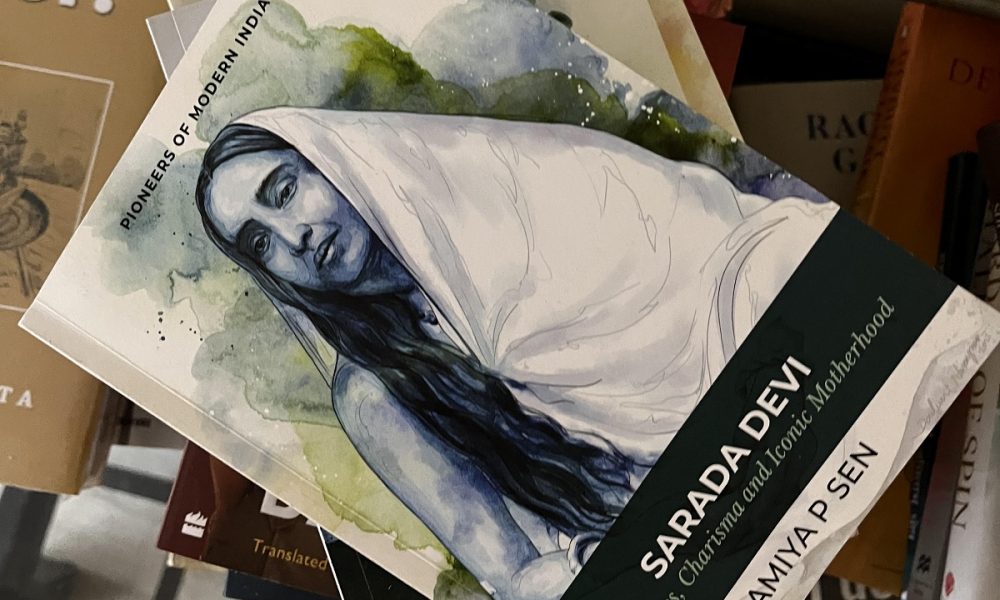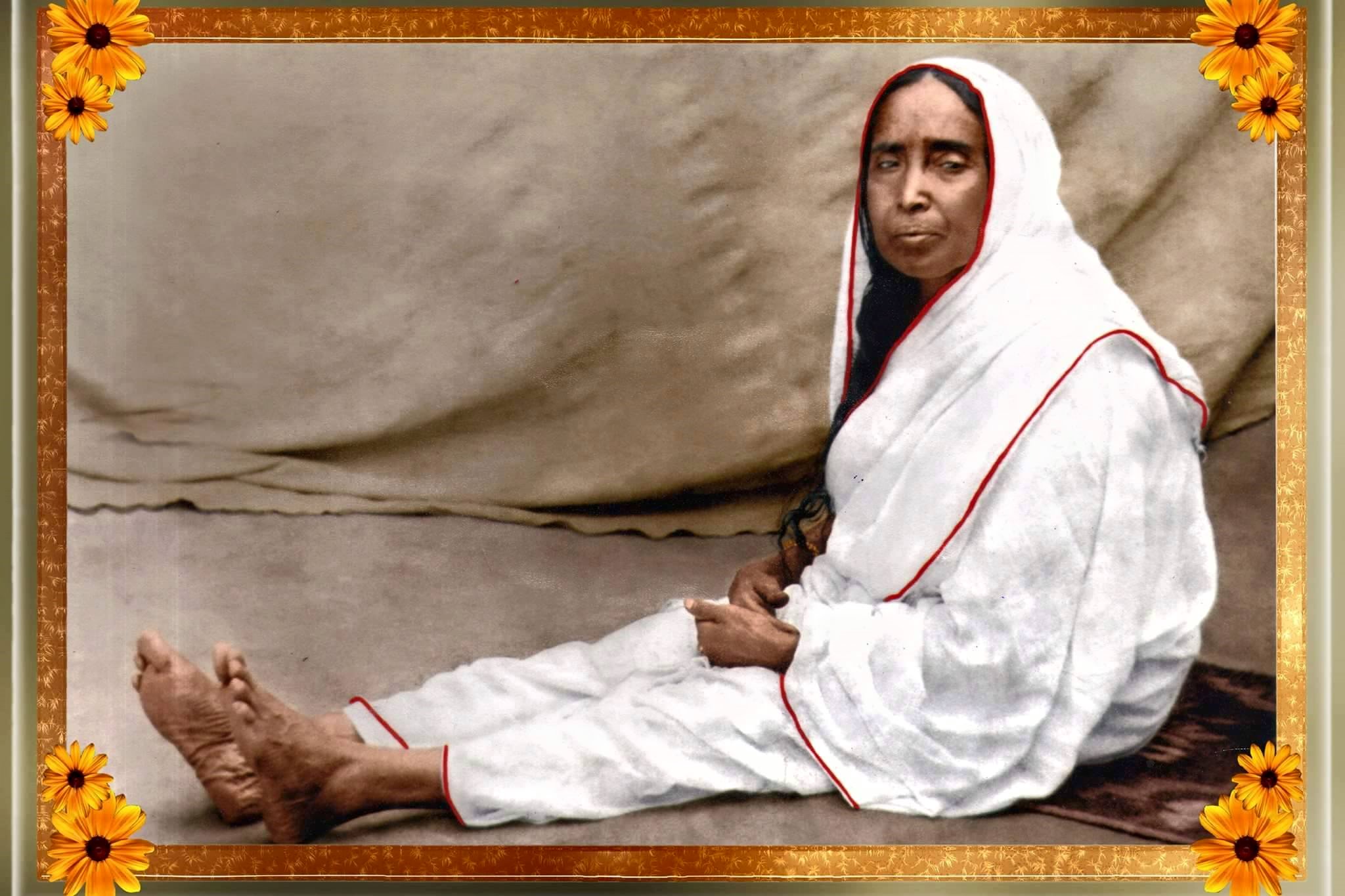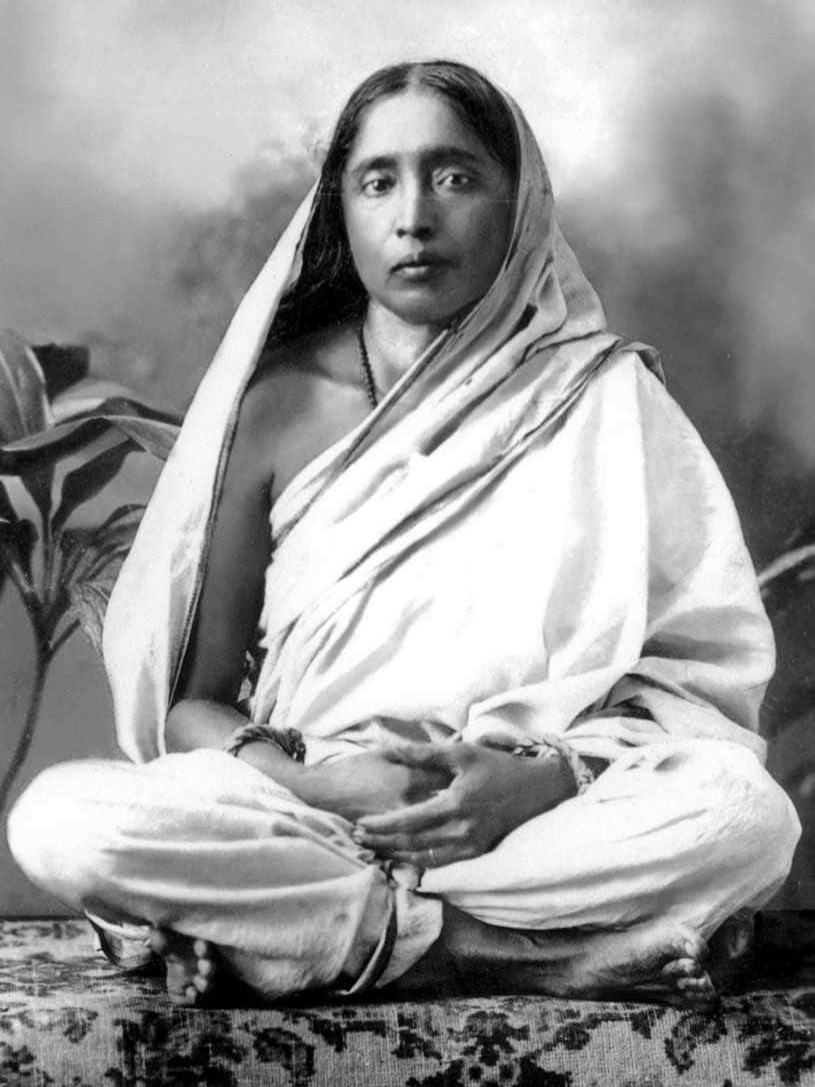
There is an old saying in Bengal’s spiritual hub of Dakshineswar and Belur. That it is home to two mothers. One is the much revered goddess Kali, also called Ma Bhabatarini, of Dakshineswar and the other Ma Sarada, whose statue facing the Ganges is in the complex of the magnificent Belur ashram.
I think it was in the early 90s I met a monk of the Ramakrishna order at Belur and asked him why the statue of Sarada Devi – the spiritual counterpart of Sri Ramakrishna Paramahamsa – was faced towards Calcutta (not Kolkata then). The monk smiled and told me: “She was told by her husband to take care of the people of Calcutta. Her eyes are fixed on millions who live in the city.”
I remembered his words for life.
Sarada Devi: Holiness, Charisma and Iconic Motherhood is a part of the series, Pioneers of Modern India, by Amiya P. Sen. The pint-sized book explains how the divinity of God expresses itself in many ways and how Sarada Devi presented her spiritual powers to the world. She was born on December 22, 1853 in Jayrambati in West Bengal. It was around the time when the Sepoy Mutiny was in its formative stage. Her birthplace is situated in Bankura district and is three miles to the west of Kamarpukur where Sri Ramakrishna had already taken his birth seventeen years back i.e. in 1836.
Her parents had a strange, similar dream before her birth. Her father saw a young girl of golden complexion and unusual beauty, tenderly encircling his neck with her arms. Noticing her precious ornaments, he asked who she was. In a musical voice, she replied: “You see, I have come to your family.” Her parents instantly translated the dream into the homecoming of Lakshmi, the goddess of wealth.
 In short, Sarada Devi, earlier known to her parents as Saradamoni, was seen as a gift from heaven. She carried spirituality on her sleeves. She had no formal schooling but learned the Bengali alphabet. She was barely six years old when she was married to Sri Ramakrishna, in 1859, according to the custom prevalent in India in those days. She continued to live with her parents after her wedding, while Sri Ramakrishna stayed at Dakshineswar and performed daily chores as a priest in the temple of goddess Kali.
In short, Sarada Devi, earlier known to her parents as Saradamoni, was seen as a gift from heaven. She carried spirituality on her sleeves. She had no formal schooling but learned the Bengali alphabet. She was barely six years old when she was married to Sri Ramakrishna, in 1859, according to the custom prevalent in India in those days. She continued to live with her parents after her wedding, while Sri Ramakrishna stayed at Dakshineswar and performed daily chores as a priest in the temple of goddess Kali.
Sarada Devi did not go to Dakshineswar right after her marriage but she went when rumours reached her home that Sri Ramakrishna was turning insane because of his devotion to goddess Kali. Her father accompanied Saradamoni to Dakshineswar in March 1872, 12 years after her marriage. By then, she was 18 years old. She was happy to see her husband hale and hearty. She told Sri Ramakrishna she had come to help him realise his spiritual ideal.
And then, the unexpected happened. Sri Ramakrishna felt a strong desire to worship Saradamoni so that she turned into the Divine Mother. It was the new moon of June 5, 1972, an auspicious night for the worship of the Goddess Kali. Sri Ramakrishna completed all formalities of worship.
The two were joined in the transcendental union in the Self. At the end of this worship, Sri Ramakrishna surrendered himself at the feet of the woman in front of him. Saradamoni had turned into the divine mother, she was known as Ma Sarada Devi. “It is a luminous instance of how the conjugal relation between the husband and the wife can be spiritualized and be the means of the realisation of the highest end of human existence,” wrote another author describing the special occasion.
She was Ma Sarada Devi.
When her critics would question her passion for service and motherly affection towards her devotees, she would simply smile. She was quoted in a book saying: “I am the Mother, who will look after them if not I?” Sarada Devi knew what she was saying, ostensibly because she, as a young girl, was extremely fond of caring for the poor. She looked after her siblings and assisted her parents in household work. Probably a combination of her services contributed to her inclination towards leading a spiritual life. You can grow spiritual only if you care for others, right?
The book is brilliantly researched, the author says he benefited immensely from Brahmachari Akshaychaitanya’s biography of Sarada Devi, which was the first, full length biography written on the spiritual woman. The author, who found the book from a pavement seller, also consulted a host of other books, including the widely circulated Ramakrishna Kathamrita. What is interesting is the fact that the book is not meant for the monks of the Ramakrishna order but for those who are religious, and those who are in social service. I found it a fascinating read.
Sarada Devi, claims the book and rightly so, first became Sri Ramakrishna Paramahamsa’s disciple and later, his wife. And then his goddess.
The author appears confident when says that he does not think Sarada Devi was a guru entirely in her own right and much of her religious knowledge came from Ramakrishna’s teachings. At the same time, the innate spiritual potential of the Holy Mother was no surprise to Ramakrishna Paramahansa or his disciples. In no time, Sarada Devi was hailed by all as the Universal Mother.

Her spiritual consciousness went on a high after she visited Vrindavan following the death of Sri Ramakrishna Paramahansa. She spent some time in the holy town and returned to Belur, where she continued to maintain her motherly connection with her devotees. What is interesting is that those who were once Ramakrishna’s disciples became followers of Sarada Devi. She was known for her progressive views and attracted people from all walks of life.
She was a great support for Swami Vivekananda and backed the monk in his efforts to empower people in India. Sarada Devi, claims the books, also cared for empowerment of women and girls and was seriously involved in a school for girls started by Sister Nivedita.
Sarada Devi was simple, all she desired was a peaceful world around her. She handled challenges calmly, often told her disciples that violence can never be a solution, it can only disrupt life. She wanted to be surrounded by people who cared for others. She accepted people of all backgrounds.
The book lists some strange stories revolving around the life and times of Sarada Devi. I found one very intriguing. She stayed in a small room which had no toilets. So the holy mother would wake up early every morning and go to the riverbed. One day she nearly stepped on a crocodile. She saved herself and from the next day, Sarada Devi would always carry a lamp.
During her last days, she withdrew her mind from all those who were close to her. She met only a few and repeatedly told her disciples to work selflessly towards mankind.
Till date, it remains the only underlying mission for the monks of the Ramakrishna Order.




